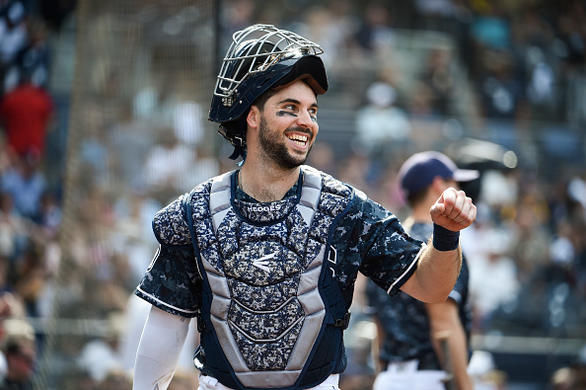OAA Can Make Outfielders Successful
- Nick Fichtner

- Jun 9, 2020
- 3 min read
Updated: Jul 15, 2020

This article is sponsored by Bases. Bases focuses on CRM development for baseball affiliated companies with the goal of developing a broader sales bases and generating creative outreach initiatives. Click on this link to learn more.
Let's talk about putting outfielders in the best position to be successful using analytics.
To do so, we focus on one advanced statistic: Outs Above Average (OAA). It is a metric that measures the cumulative effect of plays a defender has made or not made. This allows it to be a range-based measure of defensive prowess that accounts for plays made and their difficulty.
We focus on OAA in two contexts. The first being league leaders. In other words: who is the best in defensive range, in the context of this stat. The second is through the lens of direction, which allows us to quantify a defender’s output from where they started in the field. Once each has been addressed, we will bring it home with how this will help outfielders in all levels of the game be successful.
Now that we have set the table, let’s feast:
Who Is The Best?
In evaluating outfielders, Victor Robles led the league in OAA at +23, better than Gold Glovers Kevin Kiermaier (+17) and Lorenzo Cain (+14). For a deeper analysis, Robles was also superior in making plays against right-handed batters with an OAA of +14.
While one could argue that Range Factor or Defensive Runs Saved (DRS) could be better evaluators of fielding ability, they do not account for a defender’s range. OAA allows us to determine an outfielder’s positional value based on how many plays they make from their starting point. In the case of Victor Robles, his playmaking abilities in the outfield are elite.
Who Has The Best Range?
Let’s shift to Directional OAA. In this context, we are referring to OAA in a more granular manner. This version of OAA is a Statcast creation that splits fielding skill into six segments to express a fielder’s performance directionally in a 360-degree range with a defender starting in the middle.
These sections include Back Left, Back, Back Right, In Right, In, and In Left. It is important to note that the term “in” means that the outfielder is moving towards home plate when making a play on a fly ball. Using Victor Robles 2019 OAA, we reference Table One below and provide a comparison to both Kevin Kiermaier and Lorenzo Cain:

As one can see, Robles is highly versed in making plays in all directions in the outfield with moderate consistency, relative to Kiermaier and Cain. When a team has one, or many, outfielders who can make plays in multiple directions, this allows for limited offensive output from the opposing team resulting in a higher probability of winning.
How Does This Help?
Now, you might be wondering, “Well this is all great, but how does this help our players?” By focusing on OAA, a coach can determine where to properly place their outfielders so that they can be effective defensively.
In the case of Victor Robles for example, he fits perfectly in centerfield, where he was a defender for 1,199 innings in 2019. For outfielders who tend to make more plays to their right or left, they would be placed in leftfield and rightfield respectfully, to maximize their defensive capabilities. When this is realized, there is a strong impact on preventing runs and limiting balls being hit into play.
While we acknowledge that OAA is not the only metric that exists to evaluate a fielder’s ability at their respective defensive position, the added component of direction allows evaluators to quantify a player’s total contribution as a fielder and place them in the best position to be successful.
Thank you so much for choosing The Launch Angle for some out-of-the-box baseball analysis! If you liked this article, click on this link for our previous post.





Comments